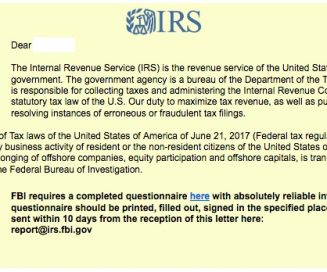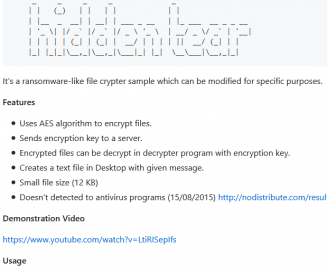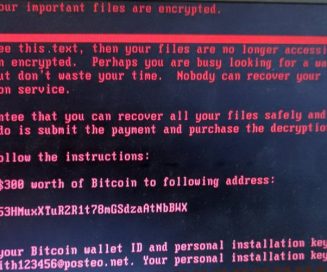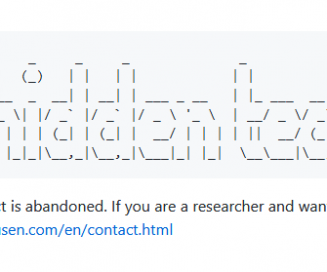Looking for something? Refine your search
- Categories
- Backup
- Cloud
- Computer Forensics
- Computing and CPU Power
- Cryptocurrency
- Damage
- Data Loss Prevention
- Data Recovery Knowledge
- Data Recovery News
- Data Recovery Service
- Data Types
- Database
- Digitization
- Encryption
- Flash Drive
- Hard Disk
- Investing and the Stock Market
- Mac/Apple
- Media
- Mobile Device
- NAS
- Network Security
- Office Documents
- Outreach
- Photos & Images
- RAID
- Ransomware Recovery
- Removable Media
- SAN
- Secure Deletion
- Server
- Services
- SSD
- Storage Industry
- Tape
- Uncategorized
- Video
- Tags
- actuator
- Apple
- backup
- bitcoin
- breach
- clean room
- clone
- computer forensics
- cryptocurrency
- cybercrime
- data recovery software
- data recovery tips
- decision tree
- EEPROM
- encryption
- ethereum
- exploit
- financial records
- fire damage
- flood
- guide
- hard drive data recovery
- hard drive failure
- hard drive manufacturers
- head ramps
- helium
- how to
- hurricane
- iOS
- landing zone
- leak
- Mac
- Mac OS
- machine learning
- macos
- Midwest
- migration
- music data recovery
- NAND
- NFT
- NVRAM
- operating system
- OS X
- parts
- password
- PCB
- Phoenix
- power surge
- RAID
- ransomware
- rebuilt
- SATA
- SaveMyFiles
- SSD
- statistics
- storms
- tornadoes
- TRIM
- video conversion
- virus
- water damage
- wildfires
- windows 10
- windows 10 guide
Ransomware Market Expands as Healthcare Industry Continues Feeling the Effects
A computer security company determined that the dark-web ransomware market has grown by 2,500 percent from 2016 to 2017. The company, Carbon Black, credits that expansion to the relative anonymity of Bitcoin and Tor as well as the lucrative return-on-investment...
October 25, 2017
The 4 Most Game-Changing Ransomware Attacks
Every week, new strains of ransomware infect computers or are spotted by security researchers while still in development. Most of them are small-scale operations that attract little attention. Every once in a while, a new malware will make headlines based...
October 9, 2017
Locky Creators Tweak Variants To Evade Detection
Locky ransomware first appeared in February 2016 using a simple but ingenious social engineering method. The distributors sent thousands of emails around the world with an infected Microsoft Word document that appeared as gibberish when opened. The message, “Enable macro...
October 4, 2017
EV Ransomware Targets WordPress Sites
A new strain of ransomware targets websites created through WordPress. The malware encrypts a web server’s files making them inaccessible. Experts have named the malicious software “EV” because it appends files with “.ev” after encrypting them. The ransomware is...
September 12, 2017
IRS Warns of Ransomware Hidden in Scam Email
The IRS warned that a phishing email impersonating the agency is making the rounds. The email contains emblems of both the IRS and FBI but is from hackers, not the governmental agencies. “This is a new twist on an old...
September 1, 2017
Hidden Tear Ransomware Still Wreaking Havoc
A Turkish computer programmer had a simple idea—create functional ransomware with backdoors and offer it for free to educate programmers. If any hackers used the malware to encrypt someone’s files, victims could use the backdoors to restore their data. The...
August 30, 2017
Lloyds of London Releases Sobering Cyber Attack Risk Report
Lloyd’s of London, a renowned insurance marketplace, has released a 56-page report detailing possible outcomes of an extreme cyber attack. Lloyd’s sought to give guidance to insurance underwriters with “realistic and plausible scenarios” to accurately predict damages. Two Simulations Predict...
July 24, 2017
Petya Ransomware Infection And Decryption Services
A Petya ransomware variant has swept through Europe in a fashion reminiscent of the WannaCry attacks of May 12, 2017. Like WannaCry, the Petya variant spreads using Eternal Blue and has affected the following businesses and organizations:Utility companies, banks,...
June 27, 2017
Hidden Tear Ransomware Infection and Decryption Services
Hidden Tear ransomware is an open-source malware program published by its developer for educational purposes. Though the author has since taken the source code offline, hackers around the world have already downloaded and redistributed it. Modified and improved variants of...
June 9, 2017
WannaCrypt Ransomware Infection and Decryption Services
WannaCrypt ransomware (also known as WannaCry and WanaCrpt0r 2.0) is the latest malware to make headlines by infecting over 250,000 computers in at least 150 countries around the world. Prominent victims include FedEx, Britain’s National Health System, Nissan, and telecom...
May 15, 2017






